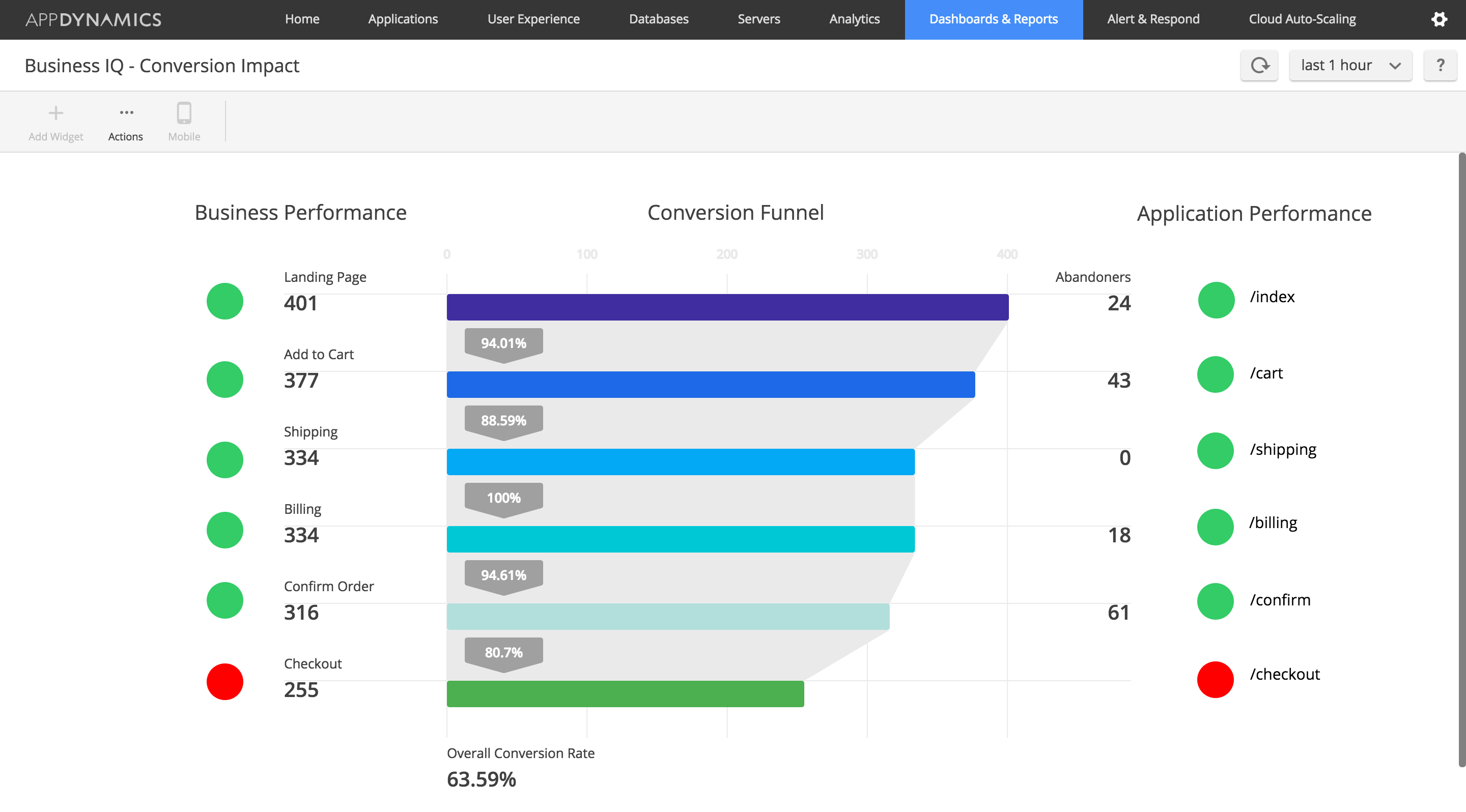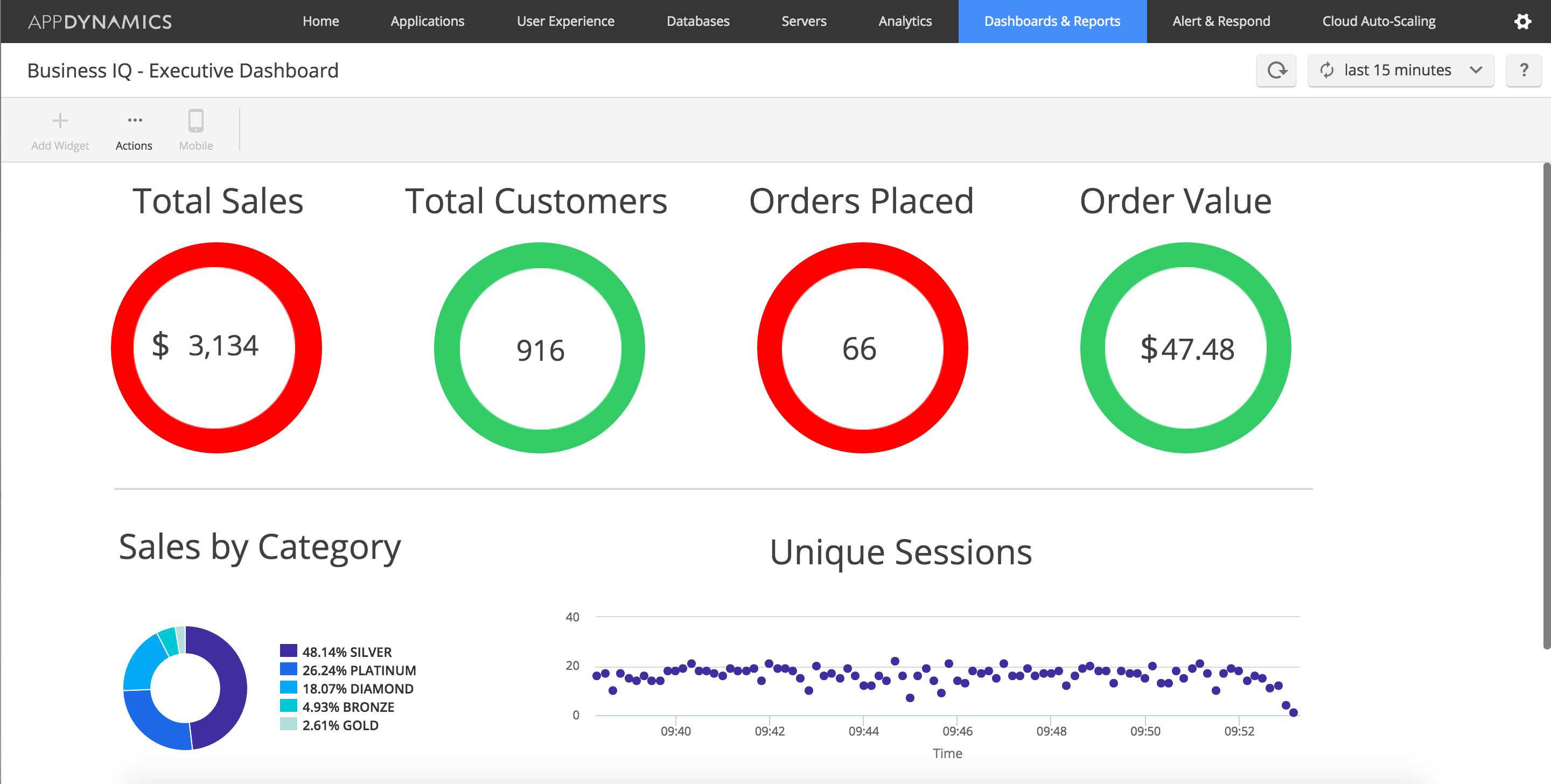Monitoring process flow with AppDynamics

Many applications can be thought of as a pipeline, with things being fed in at one end and emerging in a modified form at the other end. Here throughput is the most important characteristic rather than performance per se.
One obvious example is the sales pipeline, perhaps on an e-commerce site. The inputs are prospects. They start at the home page or some other landing page. Some will initiate a product search, some will read the product details, some will place items in the basket and some will buy them. The outputs are customers. There are inevitably some losses along the way - not all prospects turn into customers. The business is very interested in monitoring this process flow. To them a “business transaction” is the user journey from beginning to end. This could take minutes, hours or even days. A prospect may stay in one stage in the pipeline for a while before moving onto the next stage or giving up altogether. The business is very keen to see what it can do to improve the throughput. The business is not so interested in how long it takes to render a page (often measured in milliseconds or seconds) unless it is known to impact the journey. In other words, the business is not so interested in the classical AppDynamics definition of a “business transaction”.
But AppDynamics is not limited to only measuring narrow, technical, business transactions. AppDynamics is a general-purpose vehicle for presenting and analysing “business intelligence”. AppDynamics can ingest any kind of metric, such as the number of prospects at each stage of the e-commerce pipeline and how long they are spending there. All you have to do is point AppDynamics at the relevant data, be it the number of items in a message queue, or the number of rows in a database table. The sales pipeline is such a common use-case that AppDynamics has a funnel widget just for this purpose you can use in your own custom dashboards.

The sales pipeline is not the only scenario. Imagine a document-management system. Content goes through many stages. Initially it is created, then checked-in, then checked-out, modified, checked-in and out, possibly many times, before perhaps going through a submission stage, where it gains approval and is then published. There may be later stages where the document is archived and eventually deleted. Again, this process flow might take days, months or even years. The business might be interested in how many documents are checked-out, or how many are waiting on approval, or how long that step is taking. Providing the data is available, custom process flows can be designed in the AppDynamics dashboards that are meaningful and relevant to the business.

Another pipeline might be that of parcel delivery. Customers place orders, couriers collect the parcels from the warehouse, upload the list onto their hand-held device, hurtle to each location, deliver the parcel, or leave it with a neighbour, or leave it in a bush, record whether they succeeded or not, and move on. The business will want to track the progress of each parcel and will be looking for ways to improve the throughput, reduce the time taken and keep costs down. It is also important to note that no parcels should be lost along the way (unlike in the sales pipeline).
Application Performance specialises in understanding customers’ business requirements and designing dashboards that convert APM into business intelligence. Give us a call to find out more.

